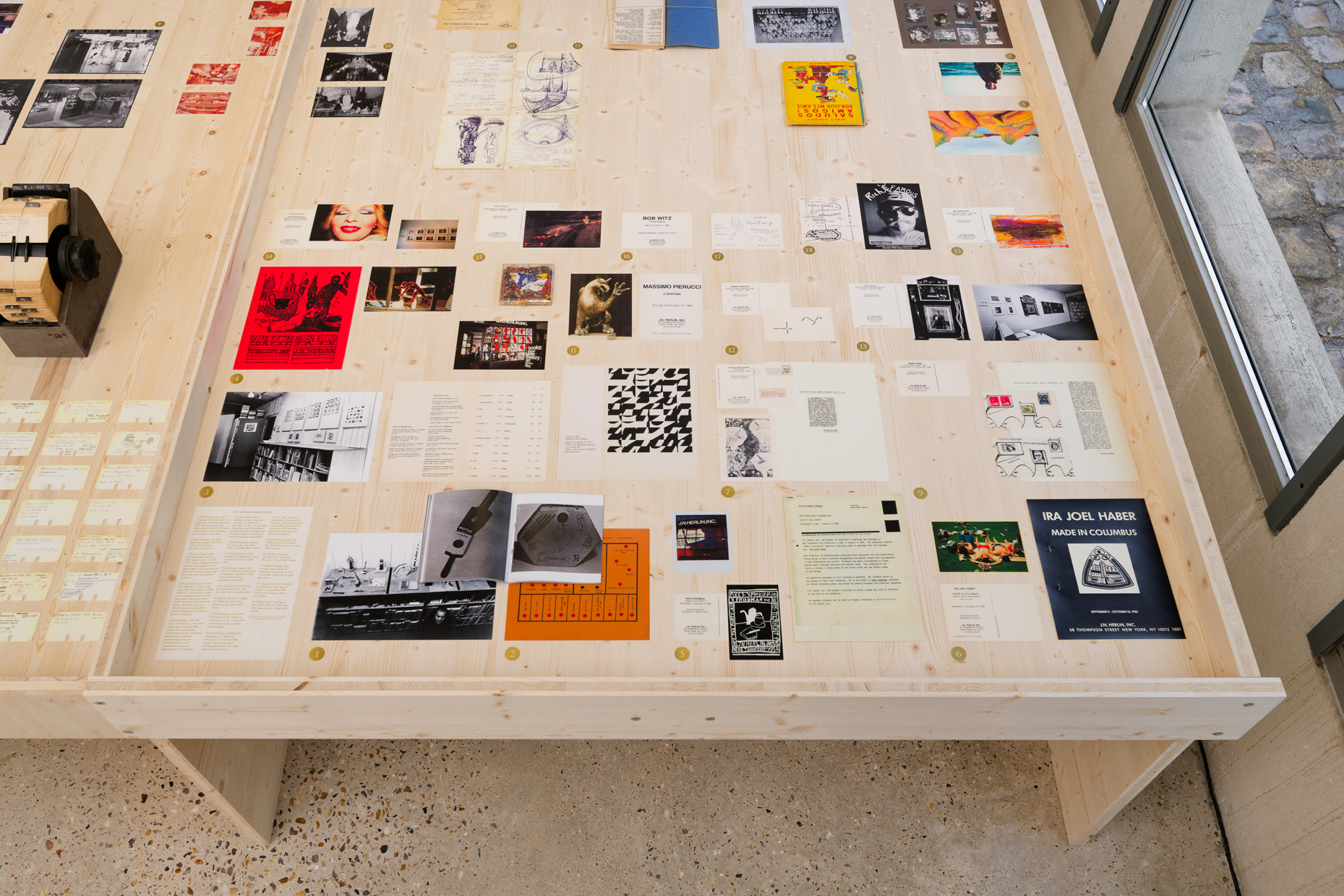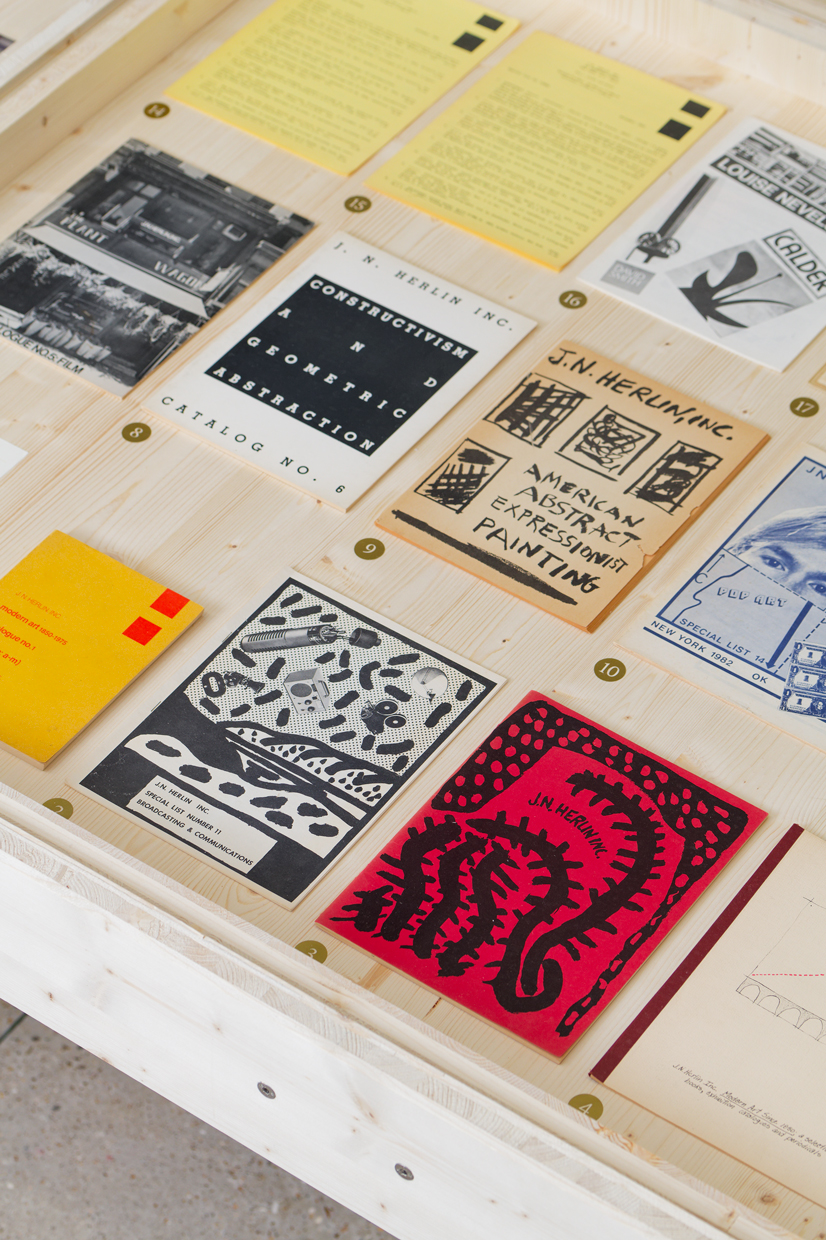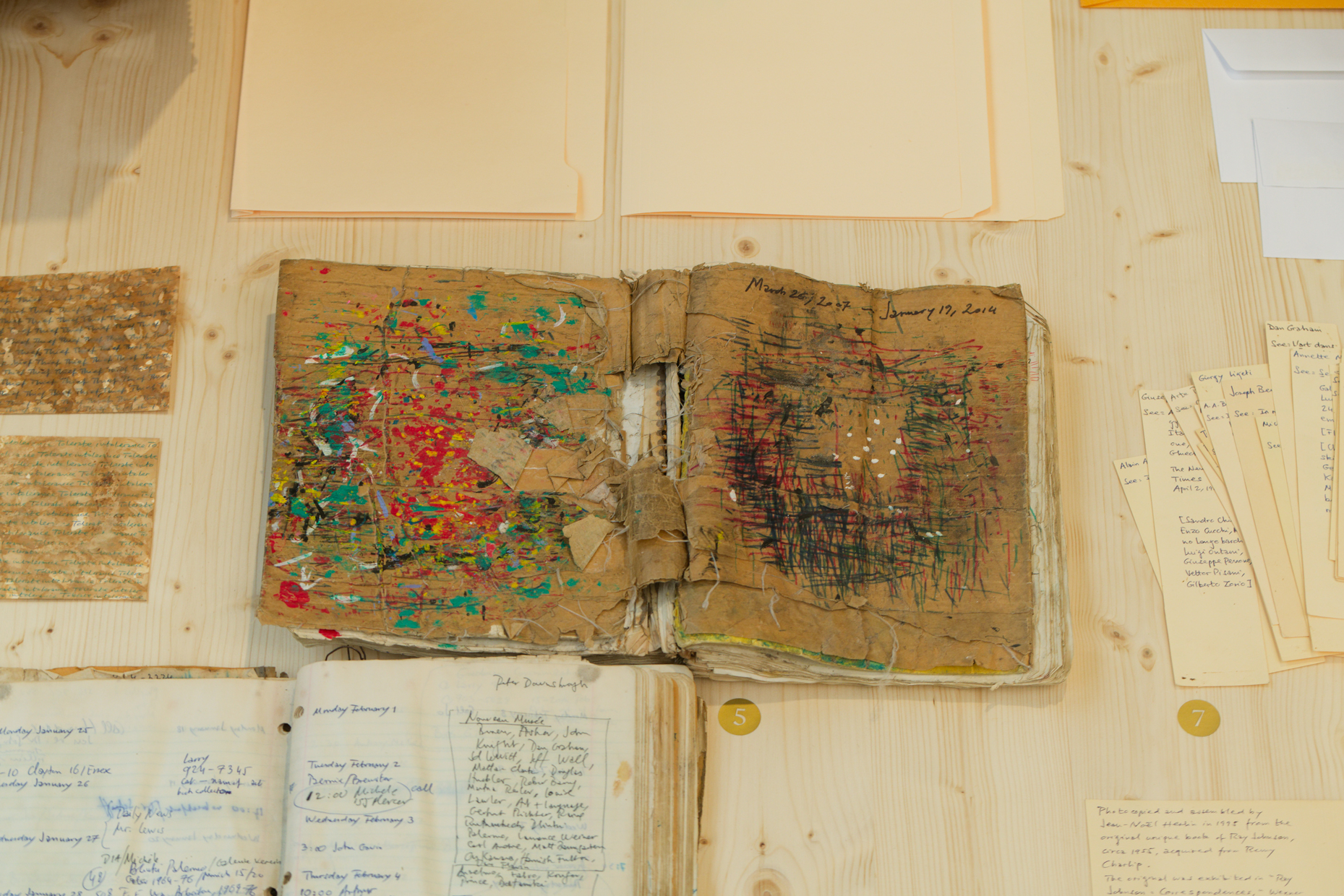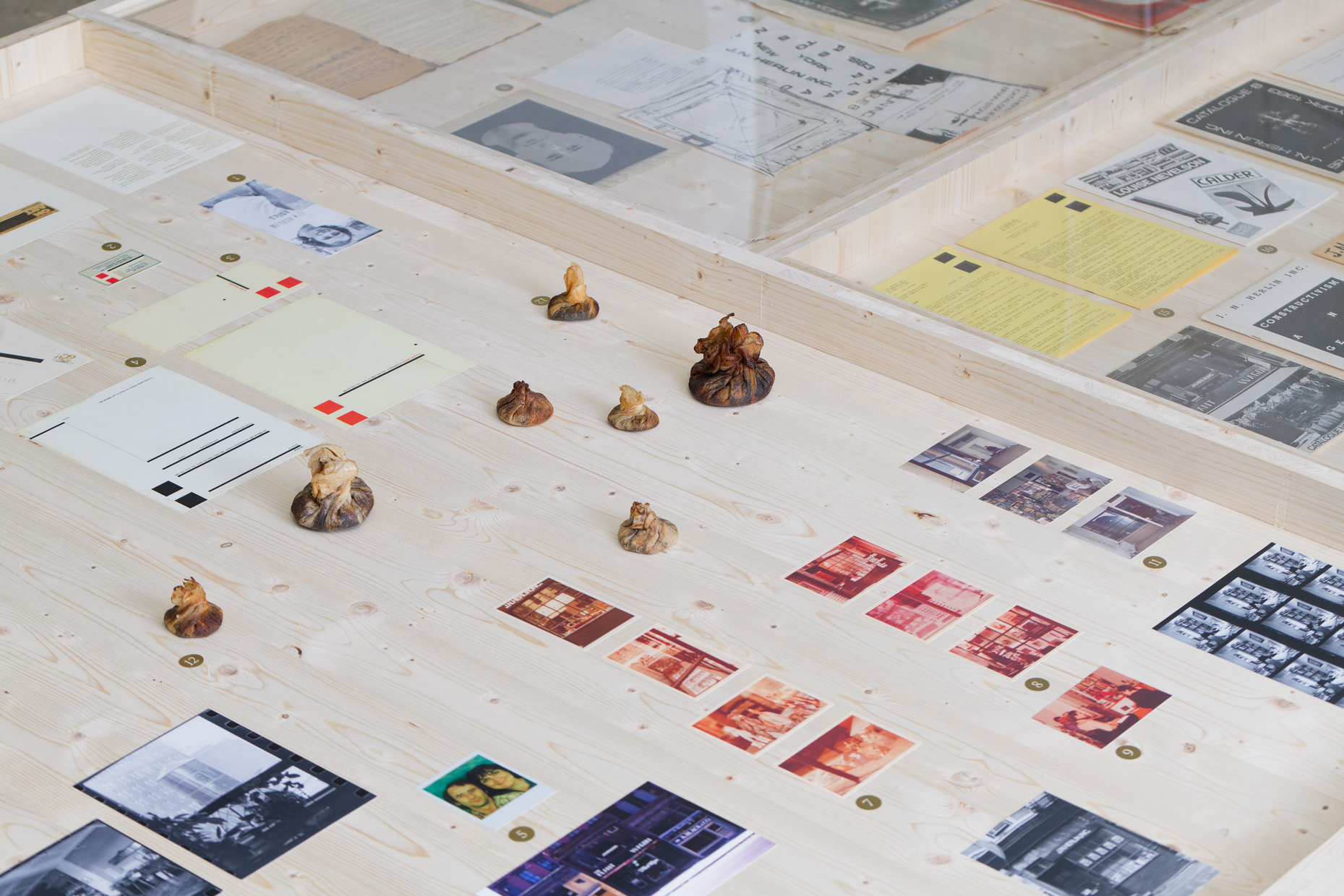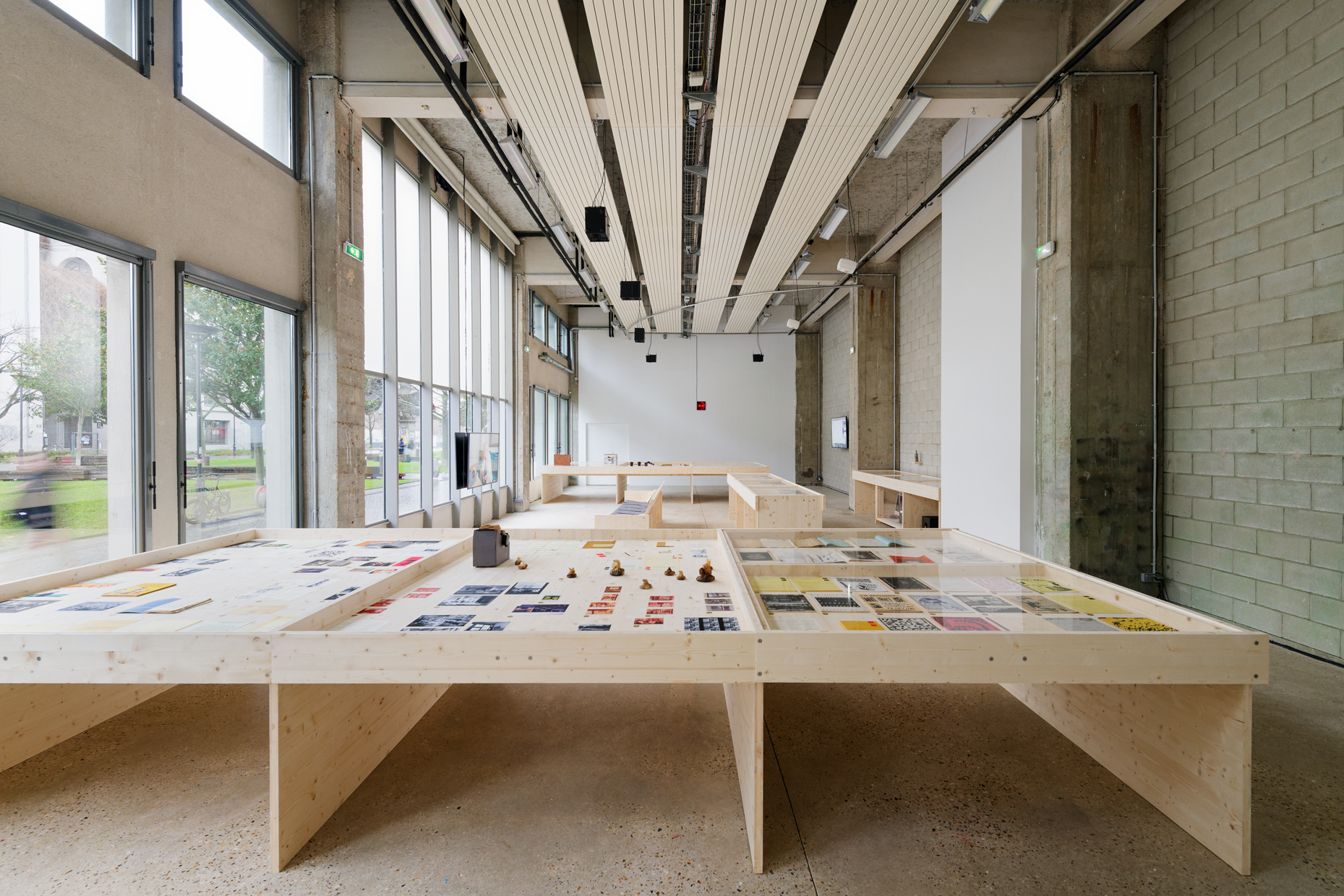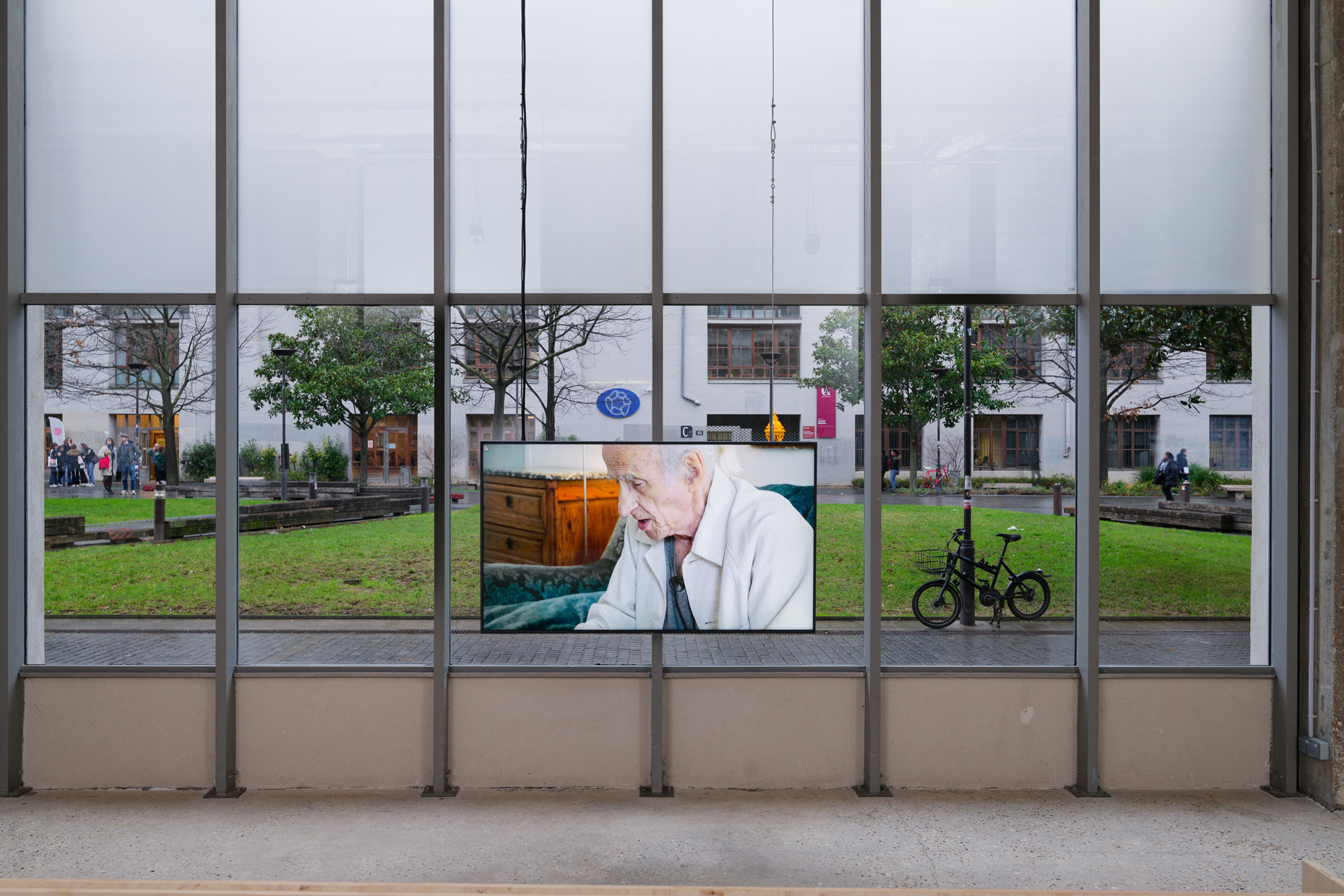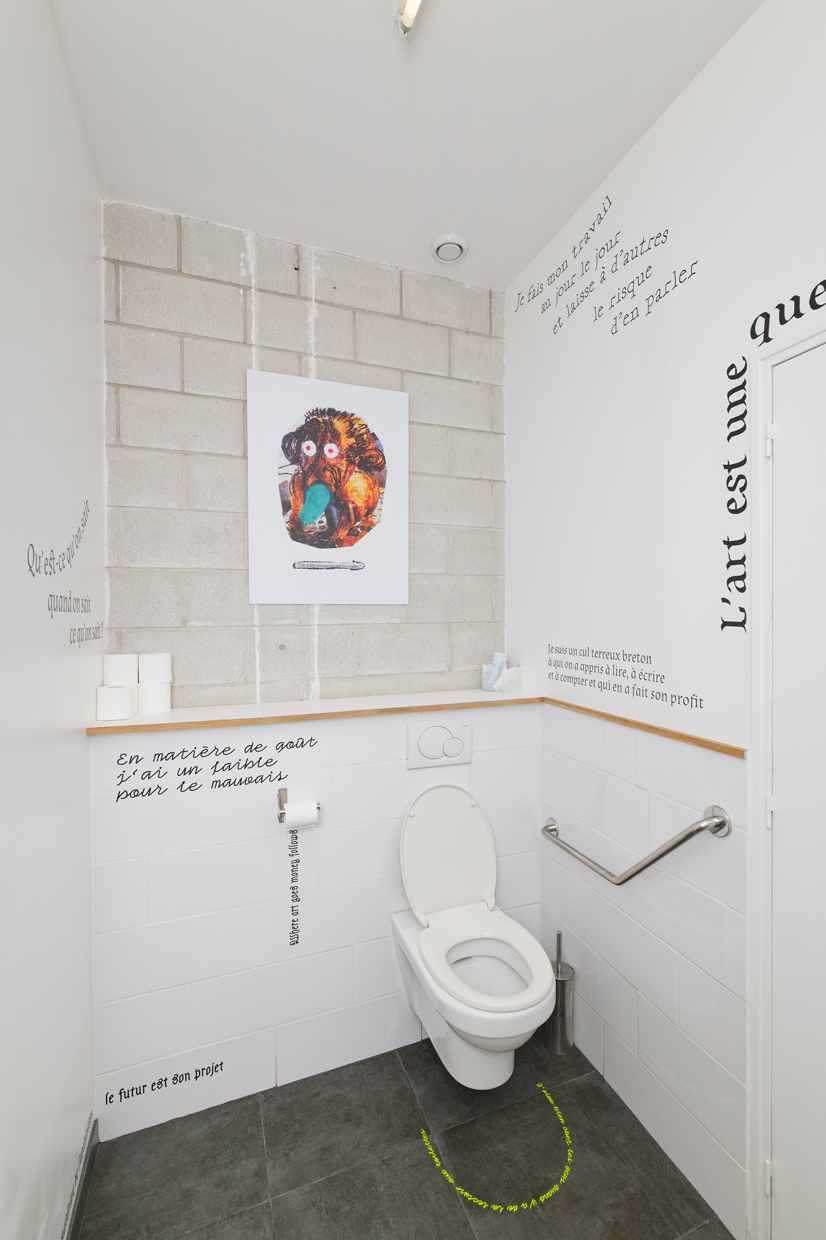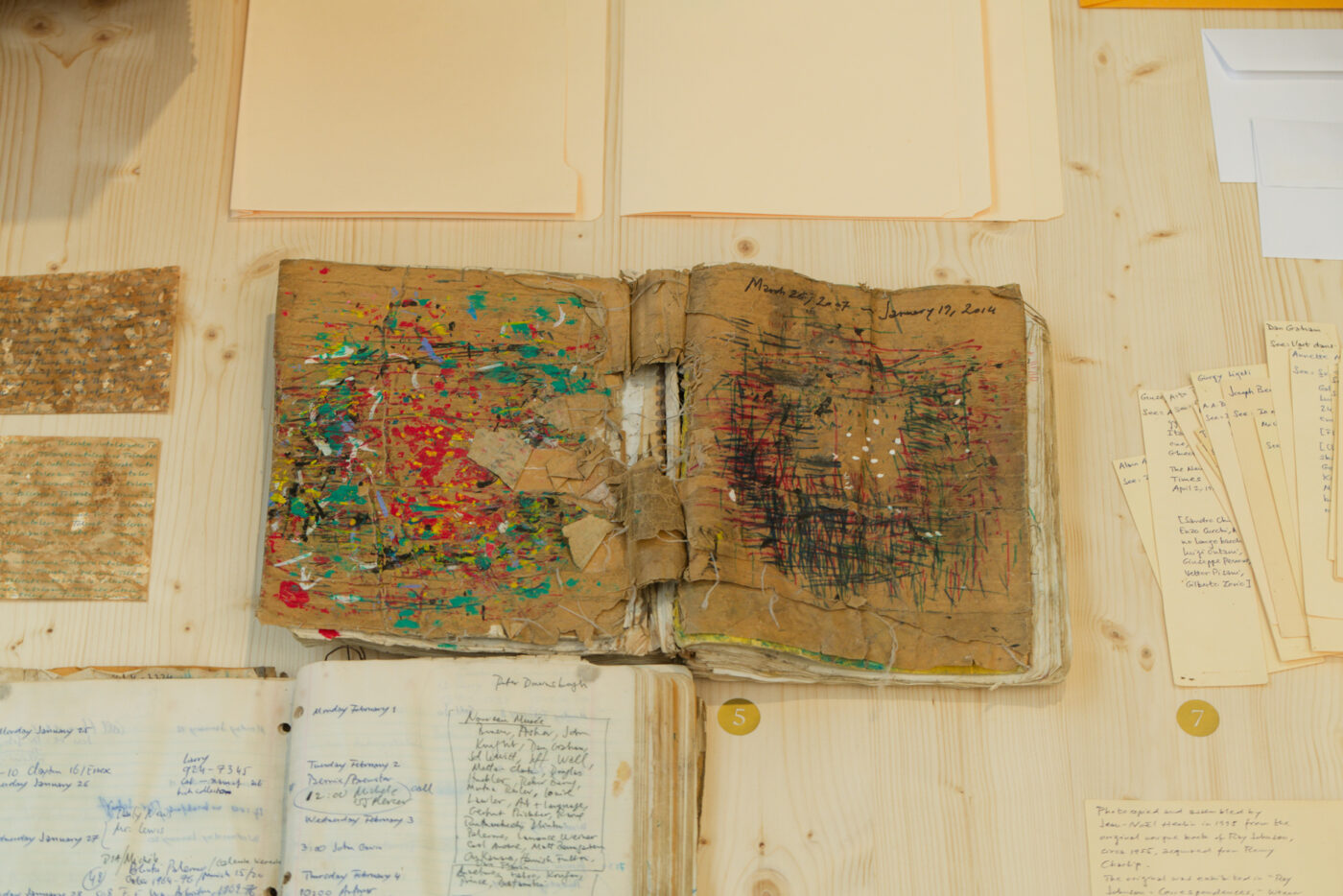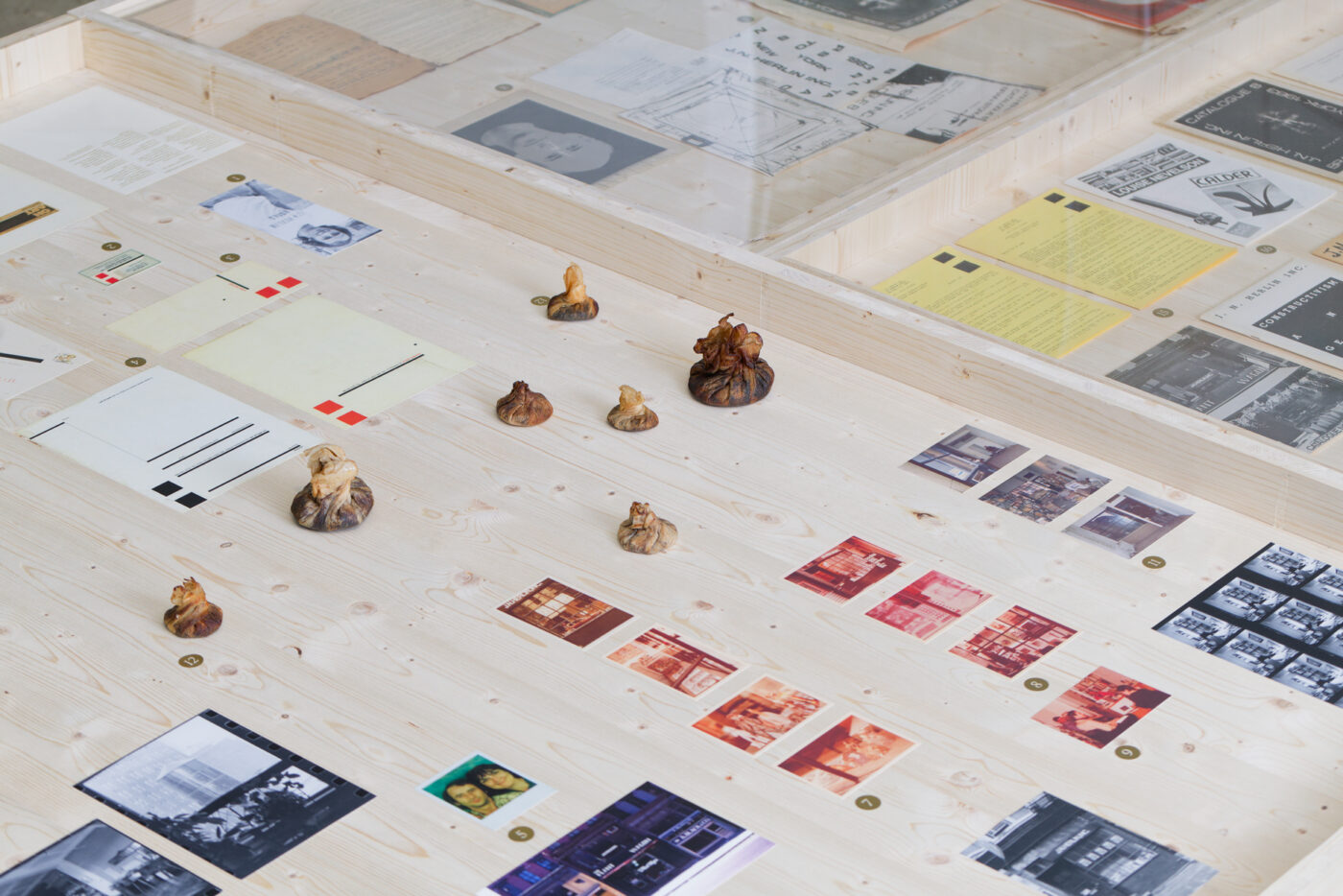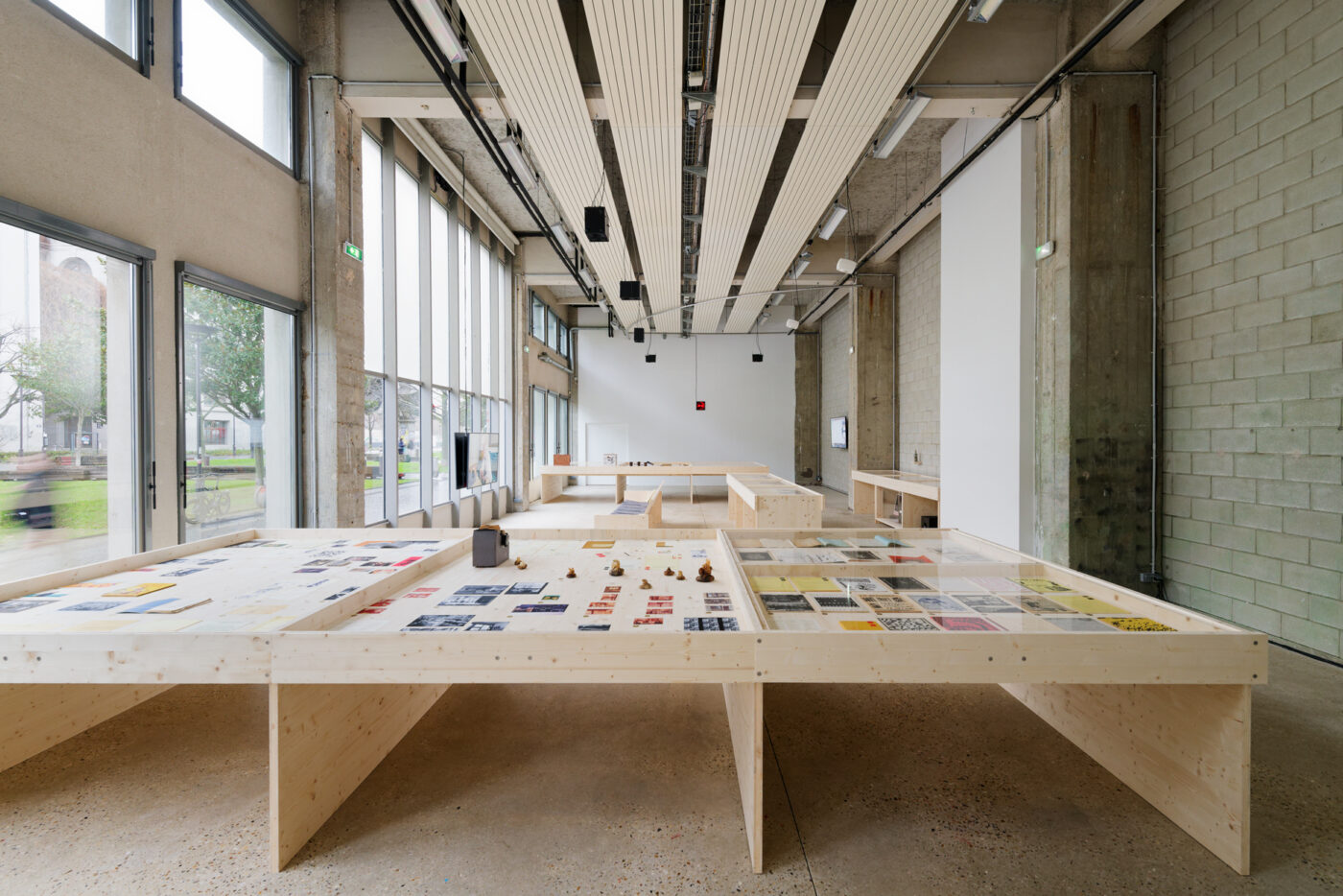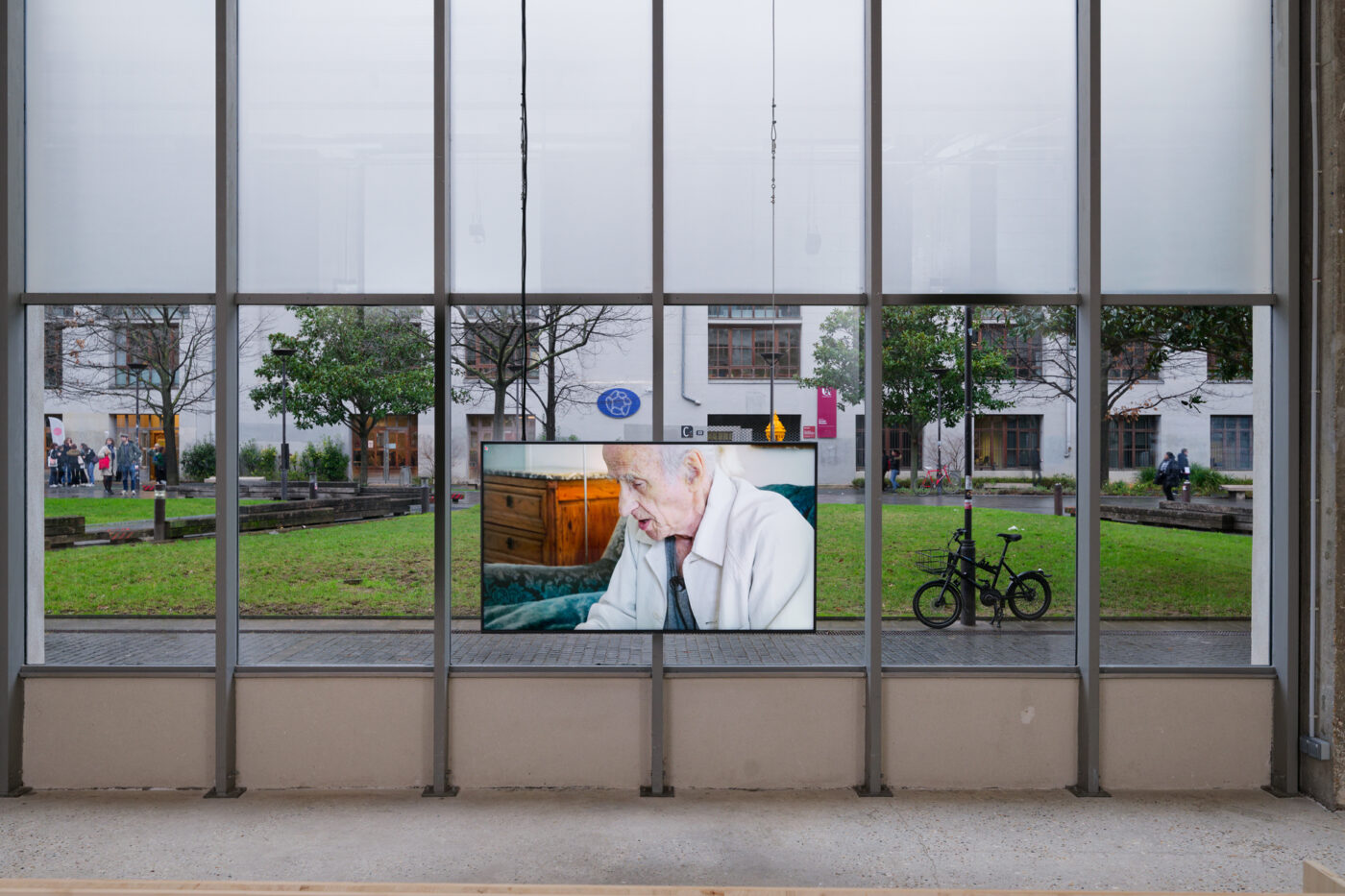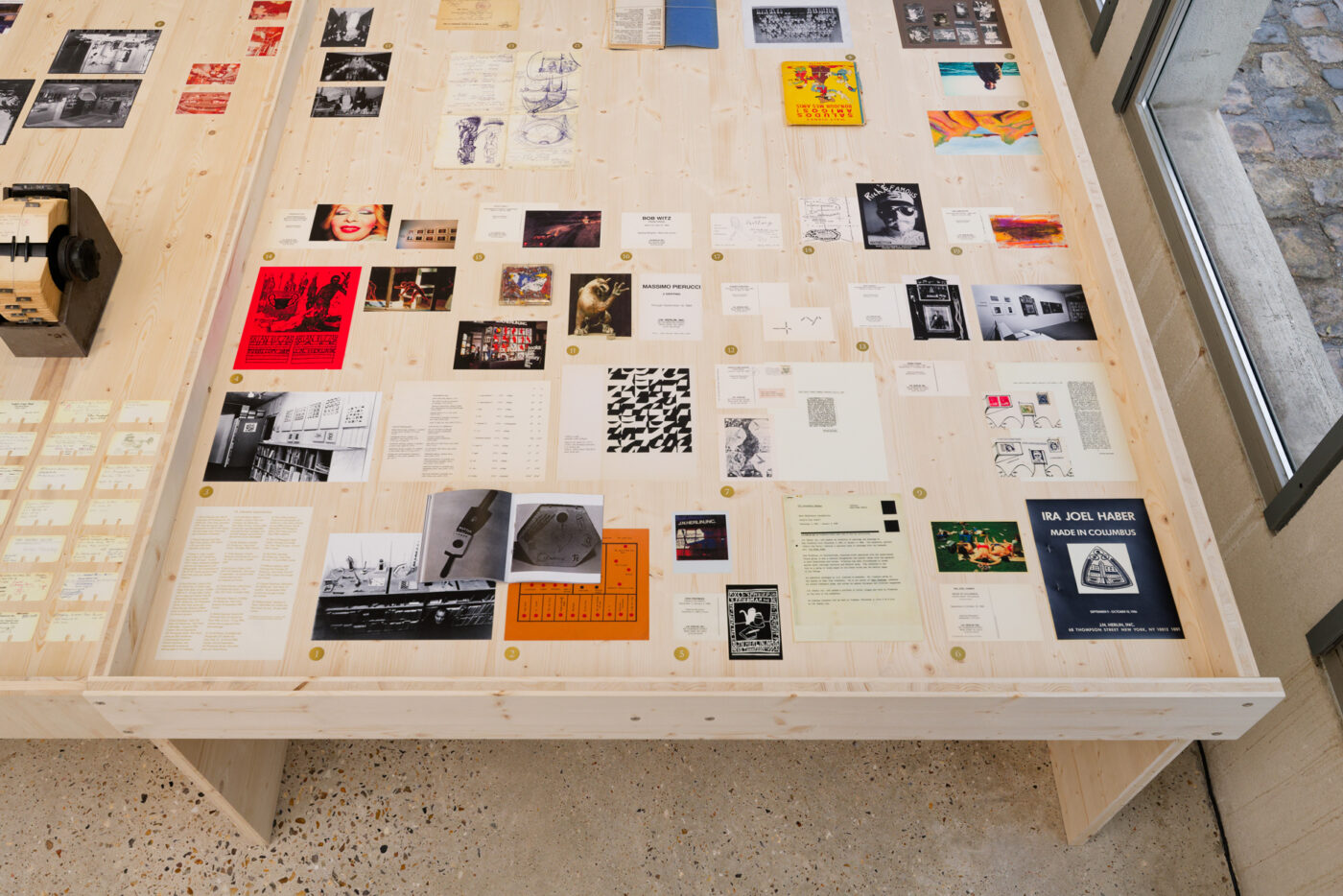
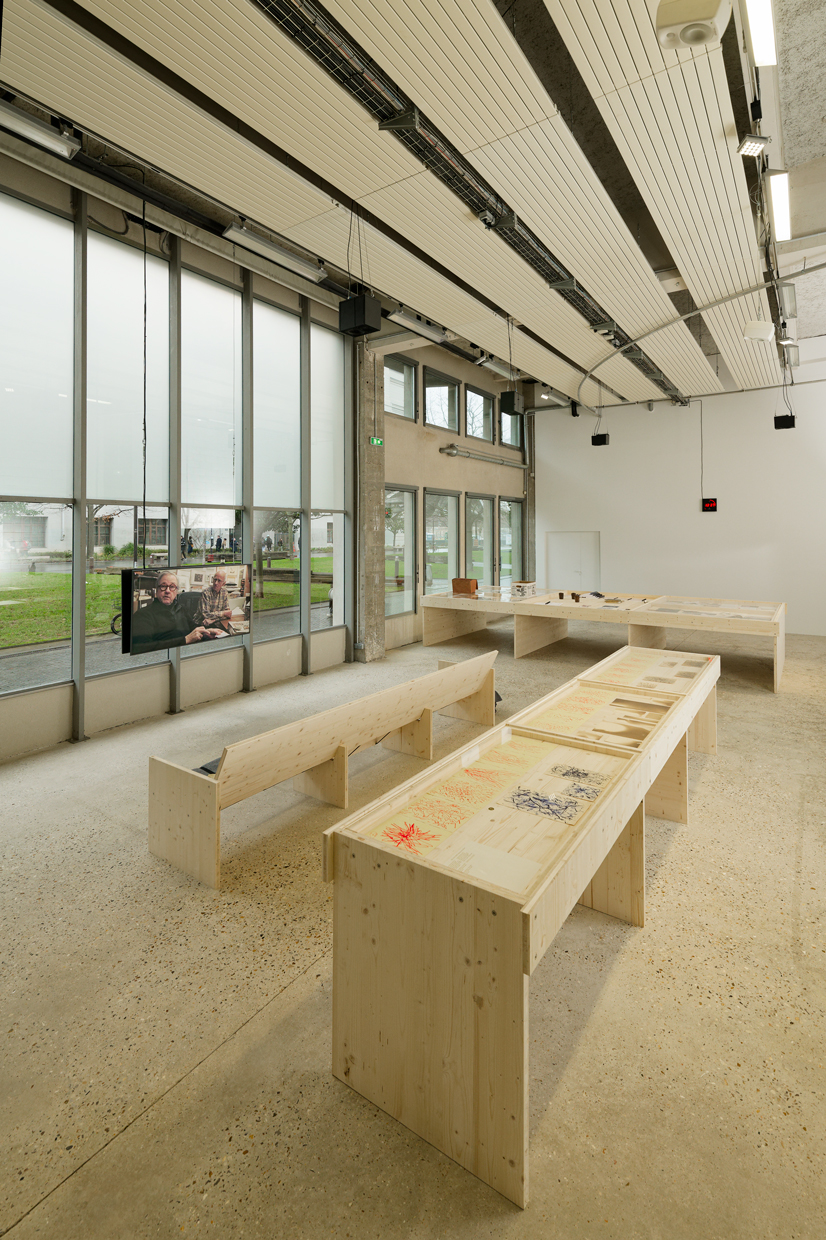
Jean-Noël Herlin, a junk mail junkie
Jean-Noël Herlin
Audiovisual installation and music: Cengiz Hartlap
Exhibition design: MPM Architecture (Jeanne Lefrand and Charles Marmion)
Graphic design: Emma Kildea
“When it comes to art, I am a junk mail junkie. Have been one for nearly thirty-five years. Well, thirty-four years to be exact, during which I have created an archive of some 300,000 items pertaining to the international visual and perfor- ming arts since 1950. If numbers speak, it contains material on more than 50,000 artists, runs 600 linear feet, and weighs five tons. A folly! A folly that has elicited ‘eternal gratitude’ from artists, scholars, and curators, and from others, glazed eyes and slack-jawed bafflement,” wrote Jean-Noël Herlin in 2007 in the introduc- tion to an article in Art on Paper, where he explains “how yesterday’s junk mail becomes today’s ephemera.”
Born in Paris in 1940, Herlin moved to New York in 1965, where he was active as a bookseller, archivist, and expert in all genres of modern and contemporary art. A voracious reader throughout his life, he considers printed matter as a “vehicle.” In his own work methods, he appropriates and hybridizes the artisanal approaches underpinning European book history and the artistic movements that emerged in the 1960s.
From 1966 onwards, he worked for Kraus Periodicals, a company specializing in the purchase and sale of periodicals and thematic book collections, which left a lasting mark in the history of bookselling in the second half of the twentieth cen- tury. In 1972, he founded J.N. Herlin, Inc., a pioneering antiquarian bookshop specialized in twentieth-century visual arts, performing arts, and film. Initially located in Greenwich Village, it moved to a loft at 108 West 28th Street and finally to SoHo, publishing nearly thirty catalogs or bookseller’s lists and organizing sixteen exhibitions along the way.
In 1973, as an extension of his bookselling activity, Herlin started what went on to become the Jean-Noël Herlin Archive Project, as part of which he collected and classified ephemera relating to modern and contemporary art: exhibition announcements, posters, press releases, brochures, press clippings, photographs, etc. As an attempt to encompass all forms of creativity, his “inclusive, panoramic, and non-hierarchical” archive, with its novel approach to so-called primary sources, is a critical contribution to an art-historical narrative that embraces a wide range of forms from different disciplines and manifestations. Since closing his bookshop in 1987, he has on numerous occasions been tasked with apprai- sing artworks and archives, notably with a view to their inclusion in institutional collections in the U.S.
In 2014, as part of my research, I in turn contacted Herlin asking for access to various files from the Archive Project. On this occasion, I discovered his unique, all-absorbing commitment to his work with written documents. Although he consciously situates himself outside the worlds of art and academia (among others by refusing to be recorded), I was able to persuade him to contribute to a film documenting his daily work, economy, and ideas.
In the course of our collaboration, in which we were joined by sound artist Cengiz Hartlap, it appeared that Herlin’s “writing practices” encompass broader notions than what the term “writing” might suggest. Some, like compiling an index or writing cross-reference cards, are a continuation of intellectual tech- niques introduced during the Renaissance. Others, such as exchanging or buying items of mail from art critics or artists that would otherwise have ended up in the trash (their junk mail, in effect), are archival inventions. Still others are common practice pushed to the extreme, such as handwriting bibliographic captions for each ephemera or assigning a price to the thousands of objects that populate artist Lil Picard’s overcrowded apartment. Others, finally, play with expectations, for instance when he turns his bookseller’s catalogs into erudite works of art ins- pired by Conceptual Art.
The first monographic exhibition devoted to Jean-Noël Herlin brings together a selection of five hundred documents and works, mainly from his personal archives, grouped according to his four main “writing practices”: reading/writing/ indexing, bookshop, archive, expertise. The presentation was conceived in conjunction with an immersive audio-visual installation whose scenario unfolds over eight hours and connects several threads: a day in the life of Herlin; the four sequences of his life’s journey in writing; events and encounters in New York and Paris. Following the different facets of his work, the exhibition reveals the com- plexity and sometimes unsettling implications of his radical commitment, which he himself describes as “utopian.”
Sara Martinetti
Jean-Noël Herlin
Jean-Noël Herlin (born 1940 in Paris, has been living and working in New York since 1965) is a bookseller, archivist, and expert. The author of an archive of ephemera linked to modern and contemporary art, he is currently developing his activities via a website that sells primary sources and documents relating to twentieth-century art history (www.jeannoelherlin.com).
Sara Martinetti
Sara Martinetti is a researcher in art history, anthropology, and theory who lives and works in Paris. Her doctoral thesis, supervised by Béatrice Fraenkel and defended in 2020 at the École des hautes études en sciences sociales (EHESS), focused on the writing practices and theoretical aspects in Seth Siegelaub’s work in Conceptual Art, activism and scholarship. She has curated several exhibitions and publications in connection with this topic, including “The Stuff That Matters: Textiles Collected by Seth Siegelaub for the CSROT” (Raven Row, London, 2012), “Seth Siegelaub: Beyond Conceptual Art” (Stedelijk Museum Amsterdam, 2015–16; cat. Walther König, 2015), and “Seth Siegelaub: ‘Better Read Than Dead,’ Writings and Interviews, 1964–2013” (cat. Walther König, 2020). Following a similar method, she has been working since 2014 with lawyer Michel Claura, who was active as an art critic and exhibition organizer between 1967 and 1982. Their collaboration has resulted in the publi- cation of two research reports made possible by grants from the Centre natio- nal des arts plastiques (Cnap) in 2017 and the Friends of the Centre Pompidou as part of the Mission Recherche scheme in 2020. In 2022, she organized the exhibition “Anka [Ptaszkowska], au cas par cas” at Capc Musée d’art contem- porain de Bordeaux.
Cengiz Hartlap
Cengiz Hartlap is a sound artist who lives and works in Paris. A musician, sound designer and sound engineer, he has a degree in electrical engineering and has played in several musical formations as a bassist, drummer, percussio- nist, and backing vocalist. He regularly composes for theater and dance (Philippe Découflé, Nasser Martin-Gousset), film (among others in collabora- tion with sound designer Nicolas Becker), and advertising. Since 2009, he has worked regularly with Philippe Parreno, notably on the occasion of the artist’s solo exhibitions at Palais de Tokyo, Armory Show in New York, Pirelli HangarBicocca in Milan and Tate Modern in London. In 2021, he was invited by art critic Federico Nicolao as part of a residency at Ateliers des Arques (Lot) to contribute to the exhibition “Paysage ouvert – La Suite des danses”. In 2022, he collaborated with Sara Martinetti on the project “Anka [Ptaszkowska], au cas par cas” at Capc Musée d’art contemporain de Bordeaux.
MPM Architecture (material–proportions–matter)
The architectural agency MPM (material–proportions–matter) is a cooperative of architects. among whom Jeanne Lefrand and Charles Marmion. Their “manifesto” states: “While we take turns collaborating on architectural pro- jects, we are guided by a shared commitment. We want our work to be part of an ongoing research exploring both traditional skills and new techniques so as to produce architecture that materializes and supports a deeper understanding of use and implementation.”
Emma Kildea
Emma Kildea is a graphic designer who is currently completing her studies at the École supérieure d’art et de design d’Amiens. As part of her Diplôme natio- nal supérieur d’expression plastique (DNSEP), she has written a dissertation on the relationship between graphic design and contemporary art. In 2022, as part of a several-month residency at FRAC Picardie, she was able to research these artistic and institutional issues in the field.
The exhibition is co-produced by the École supérieure d’art et de design d’Amiens and is supported by Villa Albertine. Sara Martinetti received support to conduct research in art theory and critique from the Centre national des arts plastiques in 2022.
Collective reading, book in French
Family stamping workshop, from age 4 and over
Flash visit, hot drinks and treats.
Bookbinding workshop for adults
Workshop on drips and stains, for children aged 6 and over
Family linocut workshop, from age 6 and over
